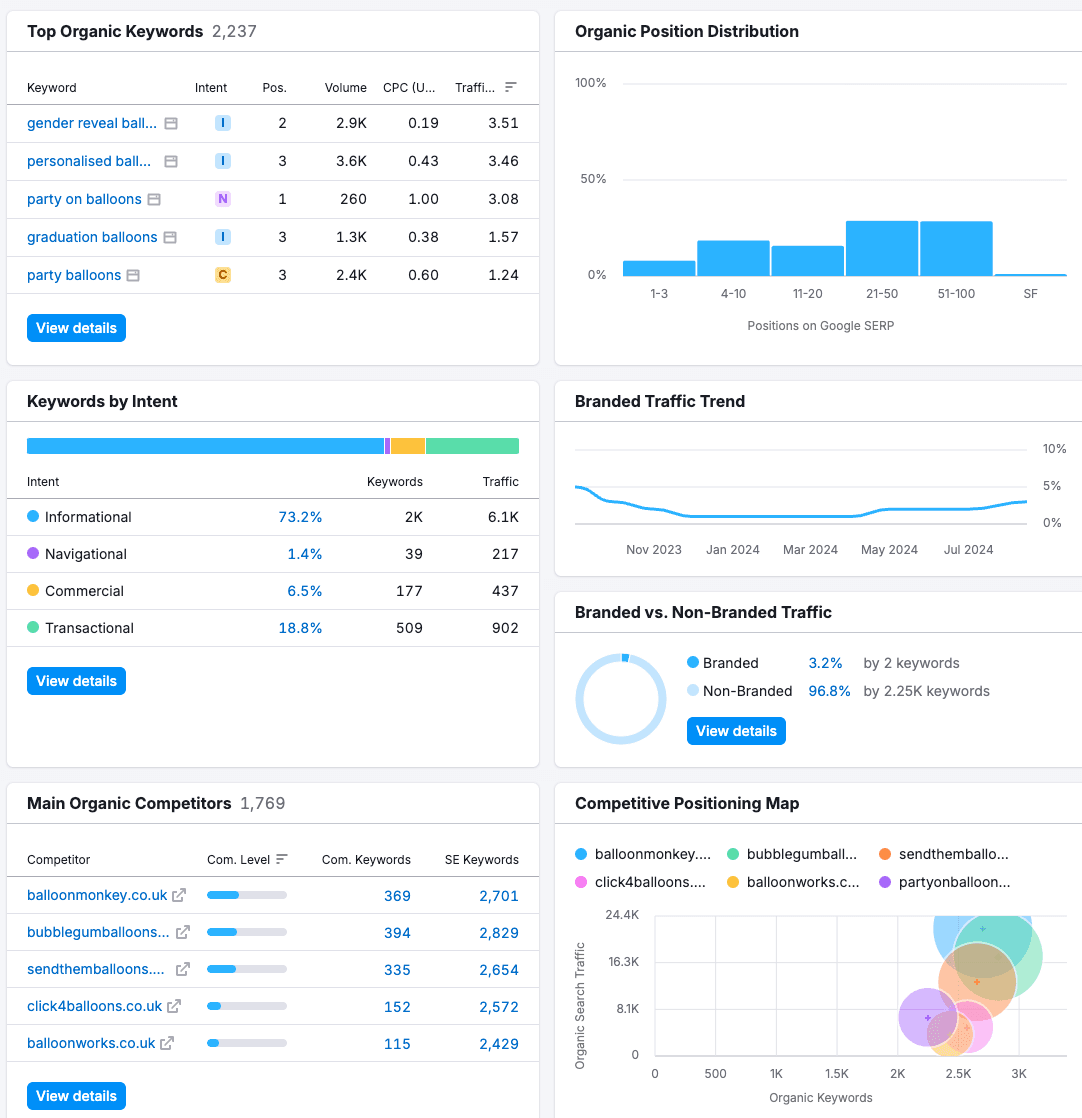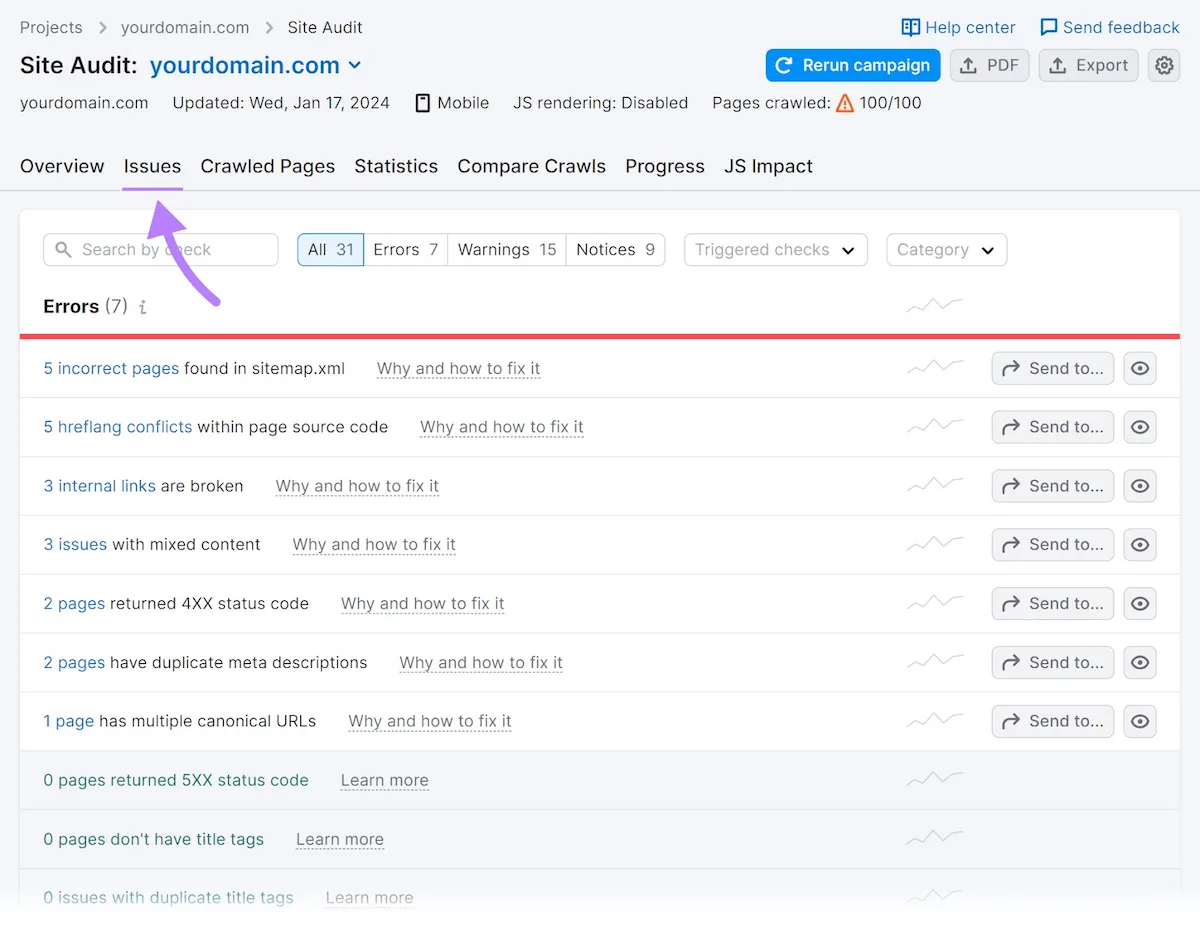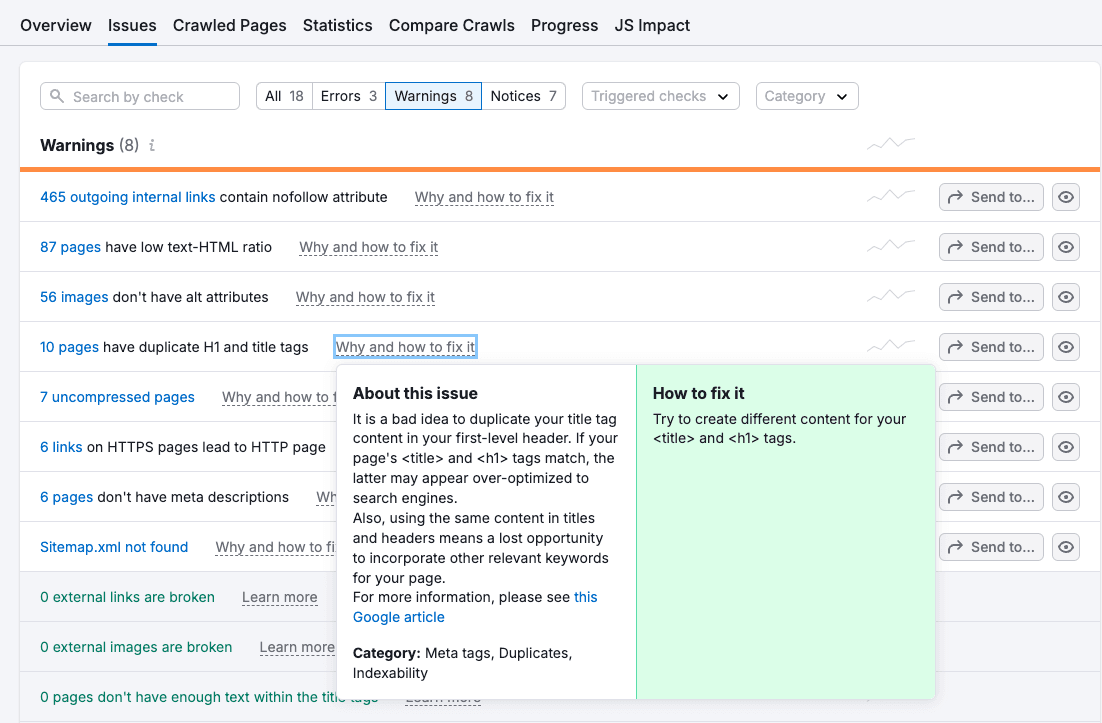
As a small business owner, you wear many hats – from tea buyer to marketing director. One of the most effective and low-cost ways to market your business to customers is search engine optimisation (SEO). Good SEO just means that when customers search online for something your company can help with, they find you. Doing it well could easily 10x your leads.
There are lots of tools you can use for SEO, each with its own strengths. In this step-by-step guide, we’re using the popular platform Semrush as an example, to demonstrate how to grow your traffic. We used the Pro plan, which allows you to track 5 projects and 500 keywords (try it for free with this link). It costs $139.95 (around £109) a month but there are several other plans, including a free version.

Let’s say your company makes personalised balloons. If you want to avoid paying for online ads, your website needs to appear high up in the results that search engines like Google show when someone searches for “buy personalised balloons”. Ideally you want to be in the top 3 “organic” (not paid for) results. That’s where SEO comes in.
Research
One of the first principles of SEO is “content for keywords”. You could write the best content in the world, but if nobody’s looking for that content, it might never get seen. And your time is precious! So you’ll want to find out what searches (AKA “keywords”) your target customers make, what searches are currently driving people to your site, and what searches drive people to your competitors’ sites.
An SEO platform like Semrush can give you instant visibility of all of these, and for each keyword you’ll see the monthly search volume and the keyword difficulty.
From there, you can plan updates to your current content as well as new content you might want to produce. Think about whether the searches you’re currently targeting are the best opportunities (in terms of volume, difficulty and “user intent” – more on this below). Tweaks to your content can help search engines understand what searches it’s most relevant to, and you can cast your net wider relatively easily.
People have different types of “intent” when they use a search engine like Google:
- Informational – when they want to find out something, such as “Can you put images on a personalised balloon?”
- Navigational – when they want to find a certain page, such as “Jo Bloggs Balloons account login”.
- Commercial – when they have a good idea of what they want and are nearly ready to buy it. For example “Best personalised birthday balloons”. These are great terms to rank highly for.
- Transactional – when they know the specific brand or product they want to buy. For example “Buy Jo Bloggs graduation balloons”. You’ll want to ensure you have all the relevant ones covered for your site. These are likely to be keen potential customers.
Seeing what terms your main competitors are ranking well for will give you some great insights – especially if there are terms in the list that are relevant for your site which you hadn’t thought of targeting.
What does it look like?
Different platforms use different formats for keyword analysis and competitor analysis – this is how Semrush shows the dashboard. You can quickly and easily check out a dashboard for your business’s site with a 14-day free trial of Semrush Pro. From this dashboard, you can drill down into the specifics.

Audit: Find and fix
You’re happy with the opportunities you’re focused on, but Google won’t want to send traffic to your site if you don’t have your house in order. This is “SEO hygiene”, and it’s about making sure you’re ticking all the boxes, and fixing straightforward things which could otherwise stop you from competing for keywords. An SEO plaform like Semrush can help you audit key SEO factors both on and off your site.
- On your site. An audit should highlight issues that can stop you from ranking highly, such as broken links, images that are missing an “alt” description (these descriptions help search engines to understand your content), duplicate content or “thin” pages with a low word count.
- Off your site. An audit should also show you sites that are linking to yours – “referring domains” – including quality backlinks that will help boost your authority and credibility. And if the content that other sites are linking to on yours is no longer there, an audit can highlight this so that you can reclaim that traffic and credibility.
What does it look like?
Here’s what an audit looks like on Semrush (see your site’s audit with a Semrush Pro 14-day free trial). It gives you an overall health score plus a list of issues and other details. You can then drill down to see where the issues are.

Your audit will give you a to-do list of issues to fix. Some common issues are:
- “Thin” content. Watch out for pages with a low word count – search engines typically prefer pages that are rich in content.
- Pages that lack a meta description. Search engines display meta descriptions in search results to show what your page is about. If there isn’t one, they may show sentences from the page that aren’t appealing to users.
- Pages that lack a meta title. A page’s “title” tag is a suggestion for the heading a search engine might use in search results pages. If yours is too short or too long (or missing altogether) then search engines might not be able to use it.
- Images where you haven’t included an alt attribute. Not including an alt description on images will not only make life harder for people with sight problems who use a screen reader, it also means you could miss out on ranking in an image search result. For a company that makes a visual product like balloons, that could be a huge missed opportunity.
- Internal links with a “nofollow” instruction. Having a rel=”nofollow” within a tag tells a search engine not to give any link credit to the page that’s linked. It looks like this <a href="example.com/link" rel="nofollow noopener" target="_blank">Nofollow link example</a> . If you have this instruction on internal links, pages you link to won’t benefit from the authority your site enjoys, because you’re effectively saying you can’t vouch for that page.
What does it look like?
These can take various forms but in Semrush, a site audit “Issues’ section highlights the problems and includes advice on how to fix them.

Track and optimise
SEO should be “always on”, because it encompasses factors that are constantly in flux. The way people search and the way search engines operate is constantly evolving. And in your specific market, chances are the landscape (competitors, tech, opportunities, etc.) is too. And if you’re investing effort in reaching more potential customers through search, you’ll want to track the return on that investment. When you have a list of target keywords, you can set up monitoring to see the improvements in your rankings and the impact that’s having.
Optimising is about focusing on what you want to be known for. As a small business, you have a small amount of precious resource and there’s no point wasting SEO time going after hugely competitive terms you won’t rank for because your site is too new or isn’t cited and linked to by lots of reputable sources.
If you’re known for great 21st birthday personalised balloons but your site is ranking on the second page of results for the relevant terms, take a look at what the sites above you are doing and see if there are ideas to inspire you, and use the suggestions from an analysis tool like Semrush, too.
You’re likely to find further opportunities among competitor keyword analysis. If one of your competitors is ranking well for a term which is relevant to your site, and a good number of people are searching for it but there isn’t a lot of competition, consider creating or improving relevant content on your site to go after it.
Bottom line
You can try out Semrush Pro for free with this link. You’ll benefit from 14 days free access to all the features described above, and more. With Semrush Pro you’ll get visibility of how your content’s performing today, and how you can reach more of the right people to scale up your small business.
Semrush is always adding new features and writing about changes to search engine marketing. You can also follow expert voices on X and LinkedIn for the latest thinking on SEO. Check out Lily Ray, Rand Fishkin and Kevin Indig if you haven’t already!
More guides on Finder
-
How to build a website for your business
Follow our tips to create your business website.
-
Best business bank account switching offers in the UK
By switching your business bank account, you may be able to reduce your monthly fees or take advantage of different features like smart bookkeeping tools.
-
Volopa review
Is Volopa’s business payments platform right for your business? We take a closer look at Volopa’s business solutions.
-
Juni business account review
Learn more about Juni’s business account for ecommerce and online marketing entrepreneurs.
-
Wise business account review
Learn more about the benefits of opening a business account with Wise
-
SumUp business account review
Find out more about the SumUp business account, including its pros and cons.
-
GoSolo business account review
We look at the features and fees of GoSolo’s business account range.
-
Santander business bank account comparison and review
Santander has some great free banking offers for startups, as well as accounts for charities and companies who hold money on behalf of clients.
-
Monzo business account review
Challenger bank Monzo now offers business banking. Check out what accounts it provides and whether they could be the right business banking solution for you.
-
Starling Bank business account review
Thinking about opening a Starling business account? Take a look at our analysis to find out if it’s suited to your company.